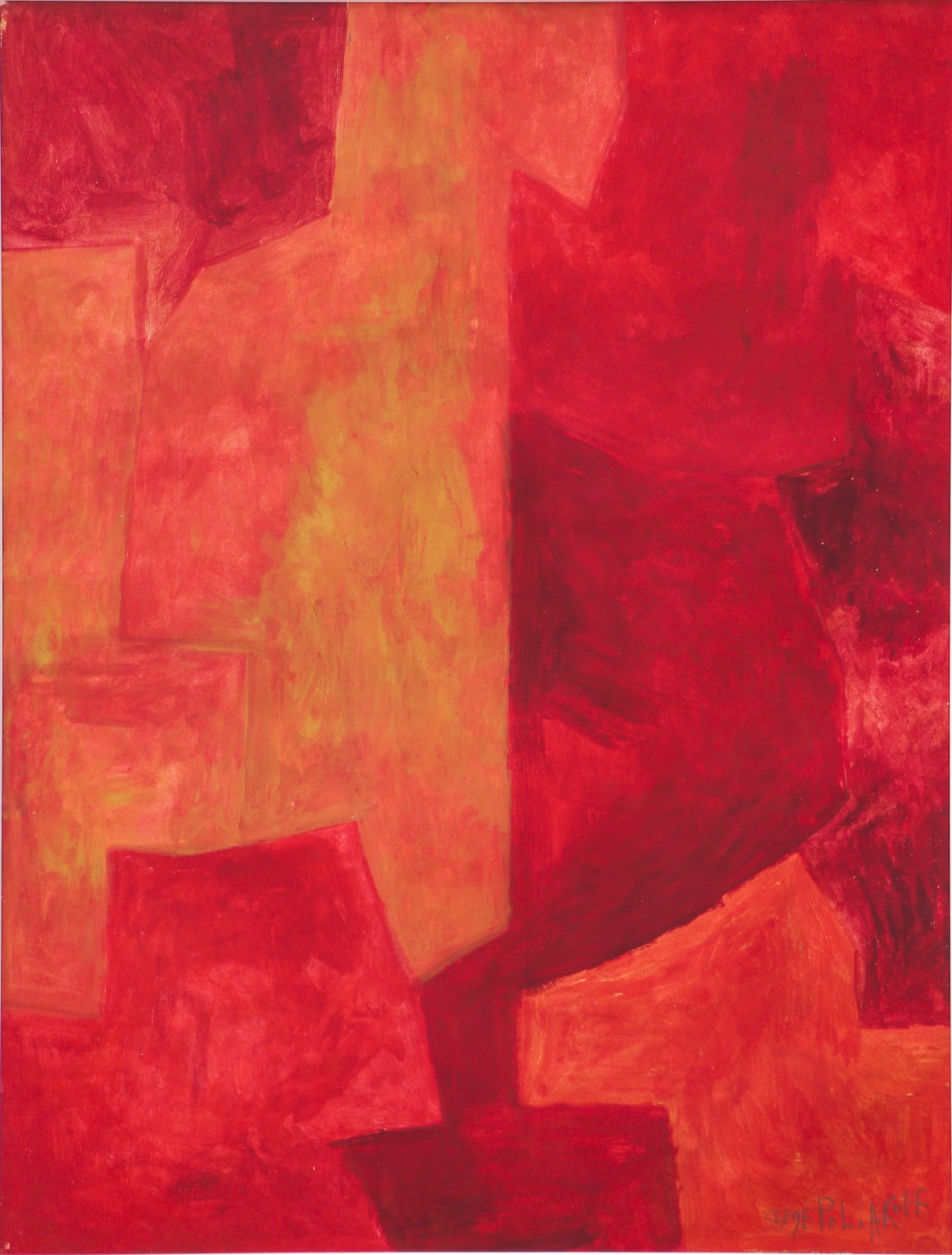-
Artworks
Serge Poliakoff
Composition Abstraite, 1960Gouache on paper24 3/4 x 18 7/8 in, 62.7 x 47.8 cmSigned lower right 'Serge Poliakoff'SoldSerge Poliakoff was one of the pivotal members of the ‘New’ Ecole de Paris that drove the rise of lyrical abstraction in Europe after the Second World War. Alongside Pierre...Serge Poliakoff was one of the pivotal members of the ‘New’ Ecole de Paris that drove the rise of lyrical abstraction in Europe after the Second World War. Alongside Pierre Soulages, Hans Hartung and Georges Mathieu, Poliakoff was celebrated for his poetic approach to colour and daring exploration of form that contrasted with the severity of geometric abstraction. This unique style of ‘colour-form’ painting was particularly inspired by Poliakoff’s meeting with Wassily Kandinsky and the contemporary patchworks of harmonious or contrasting colour by Sonia and Robert Delaunay.
In this remarkable example from the early 1960s, Poliakoff reduces his composition to vibrant interlocking shapes of amber, ochre and magenta that seem to slide together in tranquil harmony. Poliakoff was particularly interested in this careful balance between form and colour, relishing the singular moment when all aspects of a work of art are entirely resolved, which he termed “le silence complet”. Poliakoff described this moment saying, “when a painting is silent it means it is successful. Some of my paintings begin with turmoil. They are explosive. But I am satisfied only when they become silent. A form has to be listened to and not be looked at.” In the present painting Poliakoff gently alters the relationship between shape and colour to achieve this sense of stillness and calm.
Into the 1960s Poliakoff began to limit his palette to just a few tonal notes that gave his work a delicate sense of depth and three-dimensionality. This tightening of colour is apparent in ‘Composition’ through the tonal varieties of red and orange, which at times are so close that the dividing lines between forms seem to disappear. The monochromatic images of this period also embraced a greater sense of movement, revealed in ‘Composition’ through energetic marks of gouache across the paper surface. Poliakoff described the control of palette saying, “If you let it your colour will take charge of you…A child will use all the colours in the box at once, instinctively, and if you don’t want to make that same mistake”.
Poliakoff was one of the countless émigrés that fled to Paris from the Russian Revolution in 1917, initially earning his living as a musician in the city’s cabarets while training as an artist at the Académie Forchot, Académie de la Grande Chaumière and Slade School in London. He achieved considerable success during his lifetime with a retrospective of his work at the Whitechapel Gallery, London (1963), and displays at Documenta III (1964) and Venice Biennale (1962). Poliakoff’s work can now be found in international collections such as Tate, UK; Stedelijk Museum, The Netherlands; Solomon R. Guggenheim Museum, USA; Museum of Modern Art, USA; Musée d’Art modern de la Ville de Paris, France; Museum Ludwig, Germany; Moderna Museet, Sweden; Kunstmuseum Basel, Switzerland; Museum of Modern Art, Rio de Janeiro, Brasil; Museo de Arte modern de la Ciudad Buenos Aires, Argentina and Centre Georges Pompidou, France.Provenance
Salis & Vertes, Salzburg
Private Collection, Austria (acquired c.1990)
im Kinsky Vienna, 5 December 2017, lot 273
Connaught Brown, London
Private Collection, France (acquired from the above 2018)
Literature
This work is accompanied by a certificate of authenticity signed by Alexis Poliakoff and dated 7 February 2018 that states the work will be reproduced in the supplement of the forthcoming Serge Poliakoff Catalogue Raisonné. This work is registered in the Serge Poliakoff Archives, Paris under no. 860019
